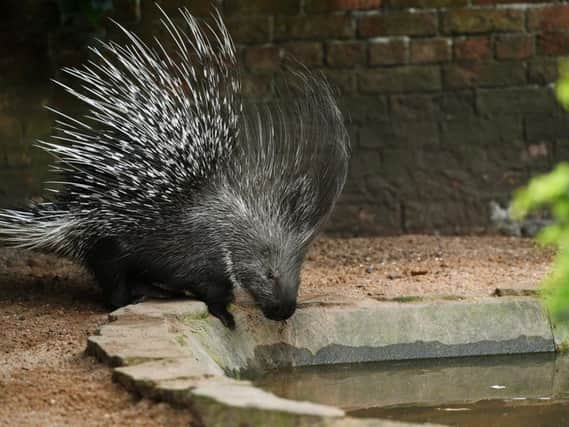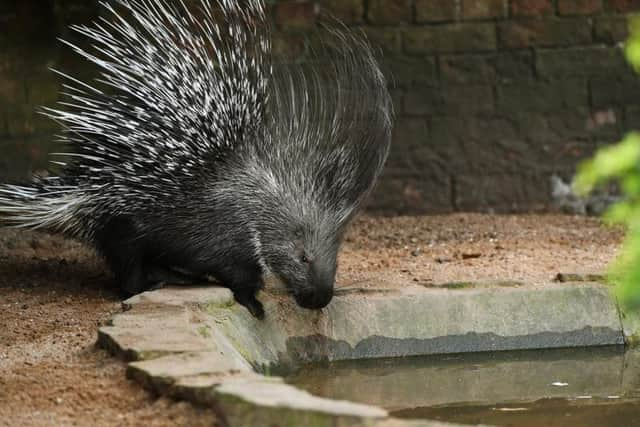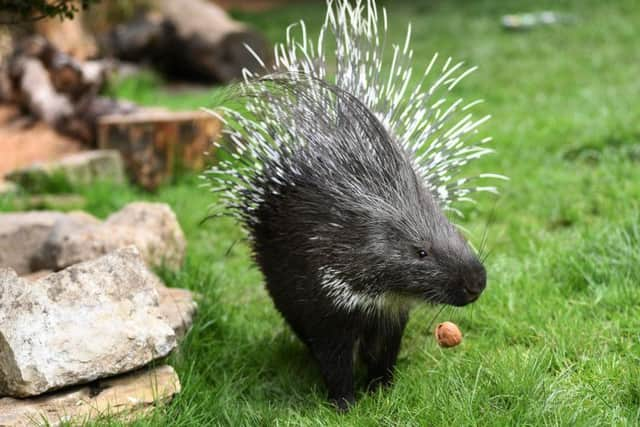A first glimpse of Lotherton Hall's newest residents, but be warned as they can be a bit prickly


Usually found in Italy, North Africa and sub-Saharan Africa, the pair of African crested porcupines were facing an uncertain fate as they were transported around the UK to be sold as pets.
But, fortunately, the spiky duo were recently saved by specialist wildlife officers and have been brought safely to their new home at Lotherton Hall and the Aberford estate’s Wildlife World attraction.


Advertisement
Hide AdAdvertisement
Hide AdThey are thought to be a male and female pair and after taking some time to settle in and get to know their surroundings, the porcupines have been enjoying the recent sunshine and snacking on walnuts - their favourite treat.
Like all porcupines the pair are shy, but will display their quills when they feel threatened. The species are also known to stamp their feet, rattle their quills and charge backwards in an effort to give their agitator a painful spike.
The porcupines have been joined at Wildlife World by a group of hyraxes, who have also newly arrived on the site. Hyraxes are a small breed of mammal found in Africa which are distantly related to elephants and manatees and the new residents are currently in a temporary enclosure while they get used to being at Lotherton.
Also just arrived are hornbills, which are birds known for their magnificent beaks, and they are part of an international breeding programme along with a pair of Stanley cranes, the national bird of South Africa.


Advertisement
Hide AdAdvertisement
Hide AdCoun Mohammed Rafique, Leeds City Council’s executive member for the environment and active lifestyles said: “It’s great to see Wildlife World’s impressive collection of residents growing, giving visitors a chance to learn about fascinating animals from around the world while being part of international efforts to protect and conserve the planet’s vulnerable species.
“Wildlife World has grown to become a unique and special attraction for Leeds and we hope that as we provide these animals with a safe and sustainable home, we’re also encouraging thousands of people each year to think about how they can do their bit to protect the environment and its wildlife.”
Other vulnerable species that are currently being supported by Wildlife World include Chilean flamingos, critically endangered Visayan warty pigs and Arthur, the attraction’s resident tapir.